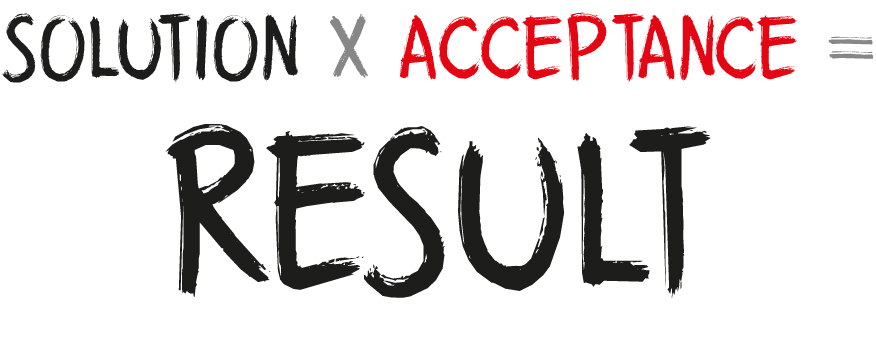This is not new but if it is true, all leaders must work with this as a given precondition. Naturally at some point almost all leaders acquired a habit of continuously scanning for existing gaps or problems that need to be solved by their teams.
Once identified these gaps ask for solutions. Always with good intentions and with a lot of ambition the same leaders then analyse the reasons behind the issue. Using various sources to identify what caused the problem and who was involved and how things got out of hands etc.
Then being a well experienced problem solver and having a habit of trying to find good ways on their own they start to define the ingredients and steps to finally solve the issue. Perhaps this skill of problem solving helped all of us in our careers. Still taught in schools and universities all over the globe, problem solving is seen as general criteria for successful development. Some of us have heard it many times from teachers and leaders saying, “do not come with problems, bring solutions instead”.
Consequently, leaders spend countless hours individually developing solutions and formulating them in e-mails or preparing Powerpoint presentations. All this is done with the intention of explaining and convincing the members of their teams about something that they have defined and decided alone. Then, presenting the solution, some leaders want to be modern and interactive. So, they ask their people if they would like to add something to the presented and already decided solution. Not seldom this question meets silence. Rarely do people cheer for it. Hardly any leader has ever been rewarded with an applause after such a presentation, but perhaps you could get a reasonably positive reaction from someone in the team saying something like: “Well, that sounds ok…”.
The solution may be as brilliant as you think, however one thing is for sure, it was built without utilizing the full capacity of the team, excluding experience, skills, and perspectives of the team members. What is surely even more troubling is that the acceptance is in best case invisible, in worst case not existing.
The simple formula
R = S x A

could give us some insight here. Even if the most qualified expert on the planet came up with a revolutionary idea and high-quality solution for an important challenge of any team, the lack of acceptance would endanger and most likely harm the execution and consequently the outcome. State of the art systems and solutions, like for example CRM systems have been introduced in almost all companies with the hope that their use will generate exceptional results. Only to find out that people are reluctantly using it or not at all.
The logical approach to increase the acceptance of a solution is to involve the people concerned by the issue into contributing with their own ideas. It is because we all consider our own ideas being easiest to accept.
By the way, the logical approach to improving the quality of a solution is the same. An idea that otherwise would have been prepared in a Powerpoint presentation could not become worse, just because other team members are asked for their solutions. On the contrary, using more brains would almost guaranteed enhance the quality of the solution.
So, what to make out this?
Telling people in detail what to do and how to execute predefined actions in an authoritarian style is clearly outdated considering the level of education and experience in today’s companies.
Also preparing solutions, presenting them, and asking people accept what has already been decided in a more target-oriented leadership approach has lost its effect.
Instead, the alternative offered by the COD concept is as follows.
- Prepare a fact-based background.
- Invite your team to a meeting and present the background.
- If appropriate ask the team for additional background.
- Put an open question starting with “How…” or “What…”
- Allow everyone to individually think and write their ideas and solutions.
- Gather the ideas, one at a time from each team member by going around the table. Write all suggestions visibly for all.
- Invite the team to select the solutions to start with, by discussion or voting.
- Clarify who is going to what, when, how and document this in your teams log list.
- Decide when to meet again to review and update the log list with the next actions and responsible persons.
The acceptance of what ends up in your log list following this COD method is without doubt much higher.
If you consider reframing your leadership for more acceptance of decisions and their execution, feel free to connect with us for sparring or advice.
